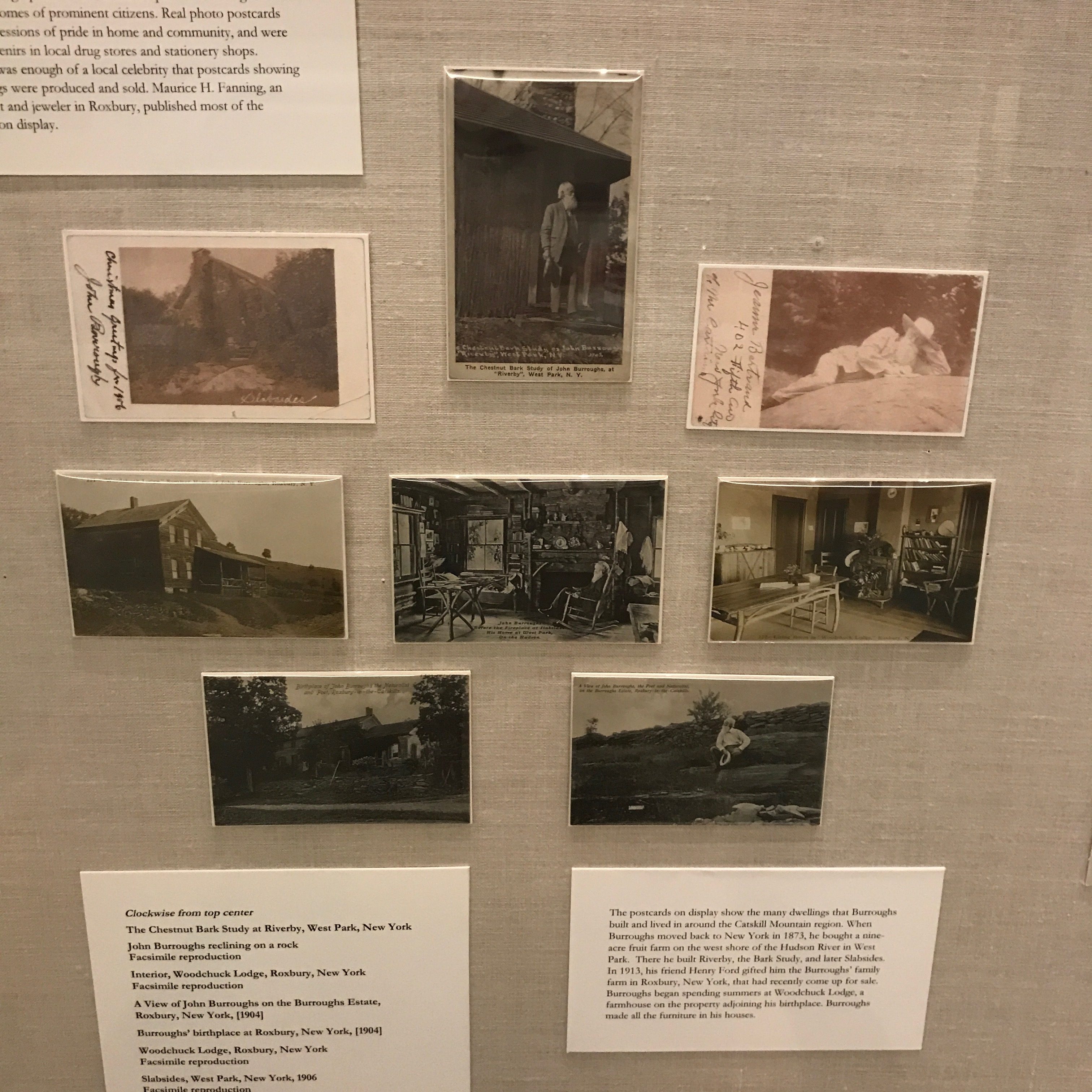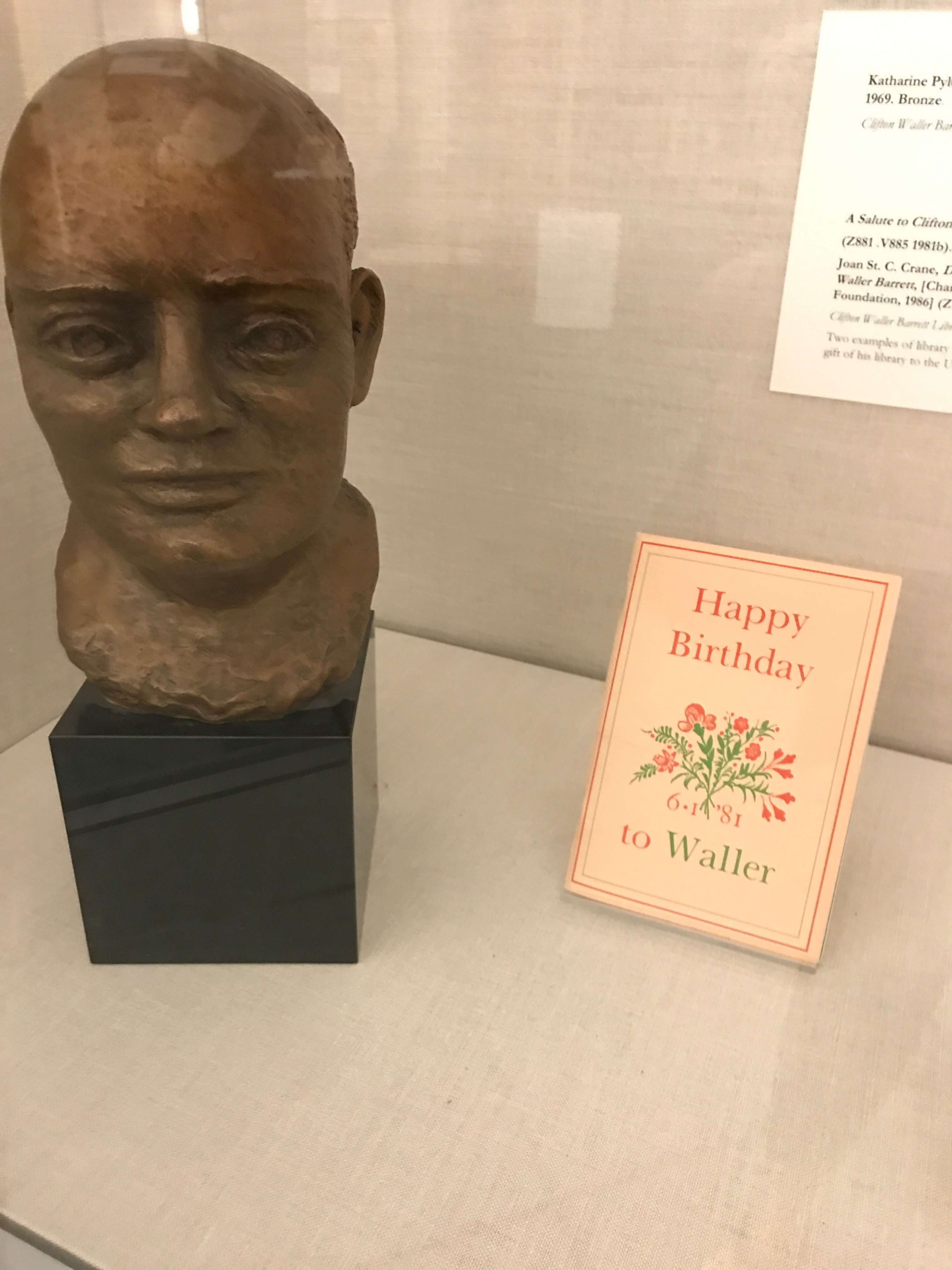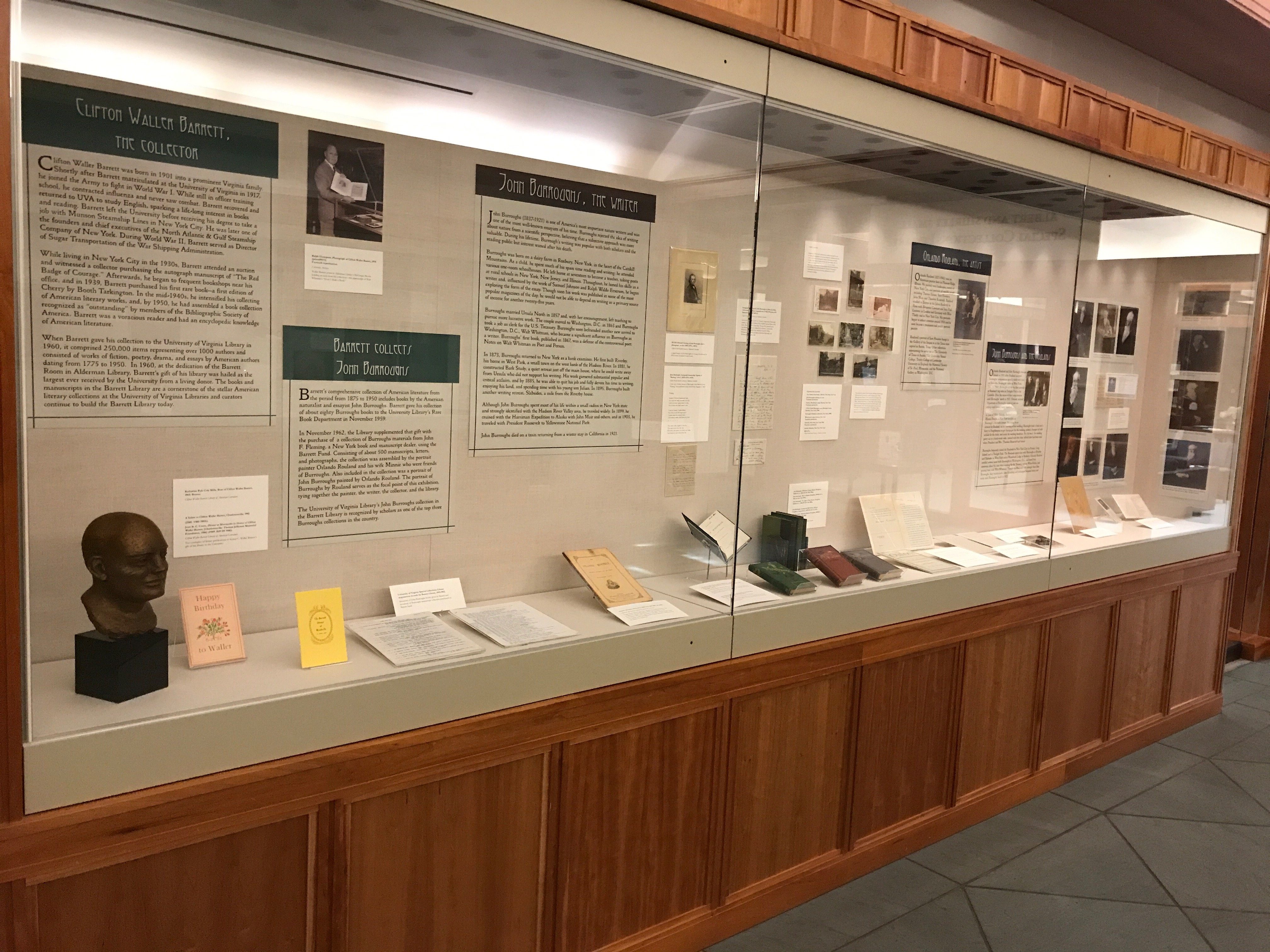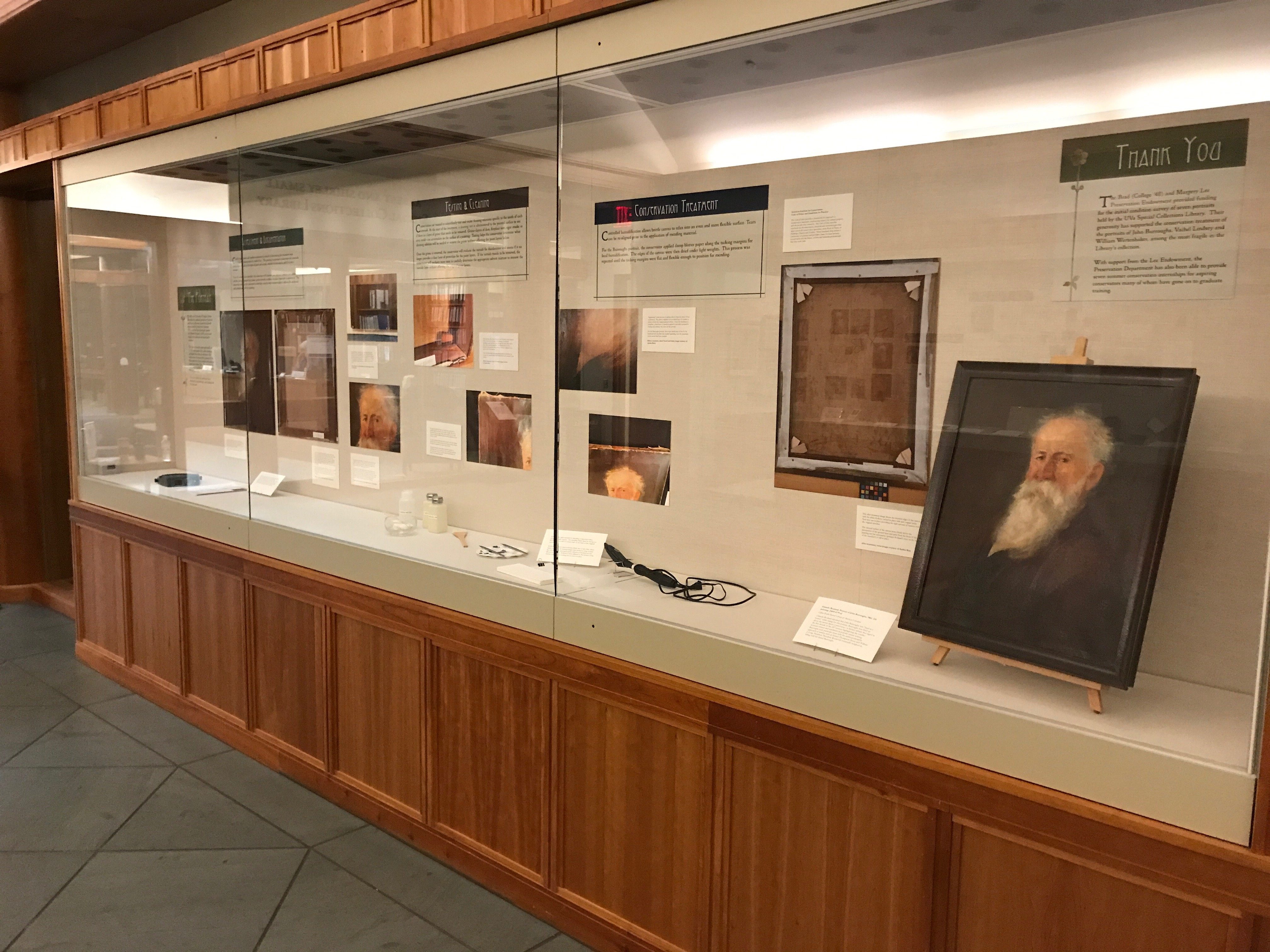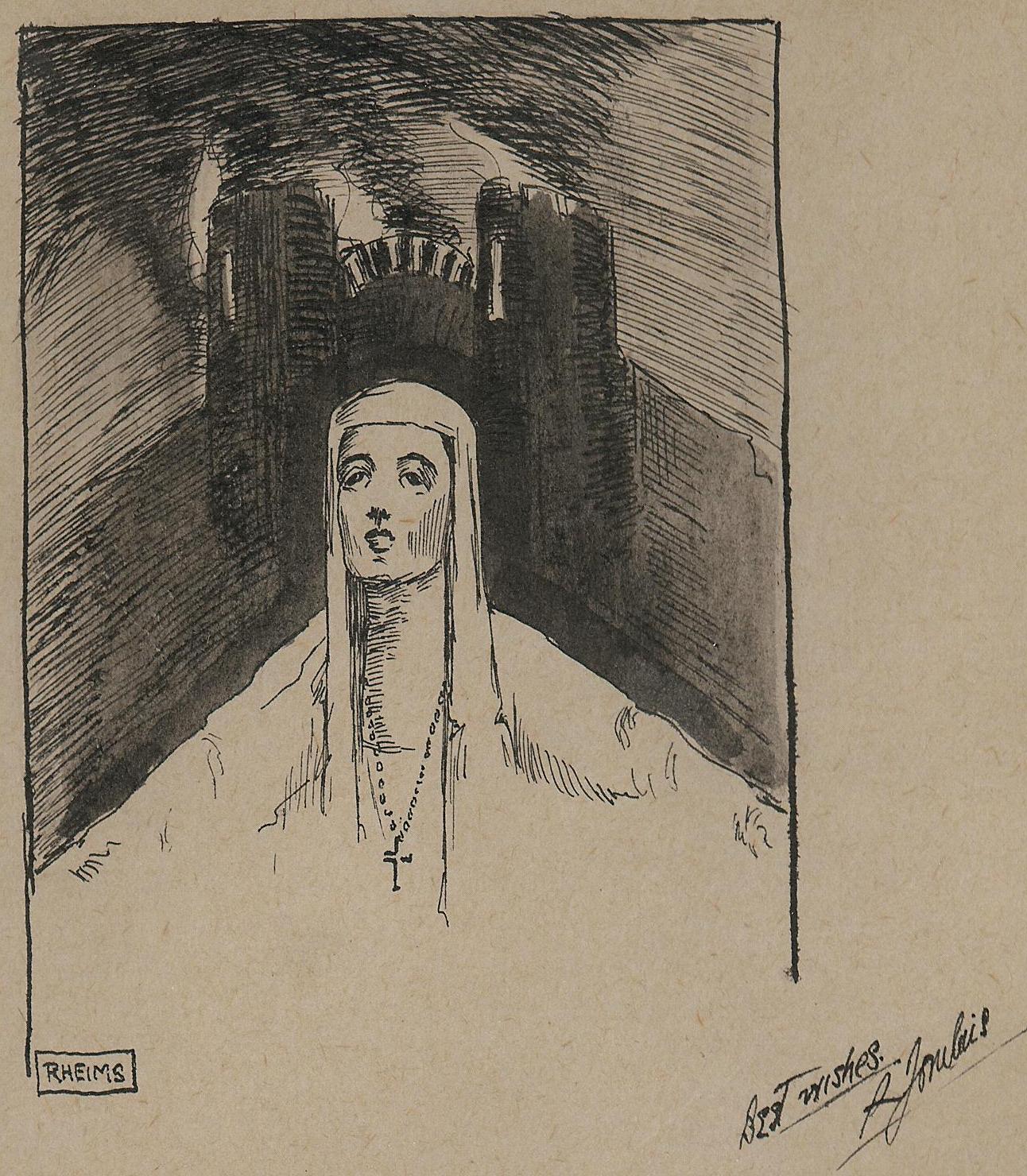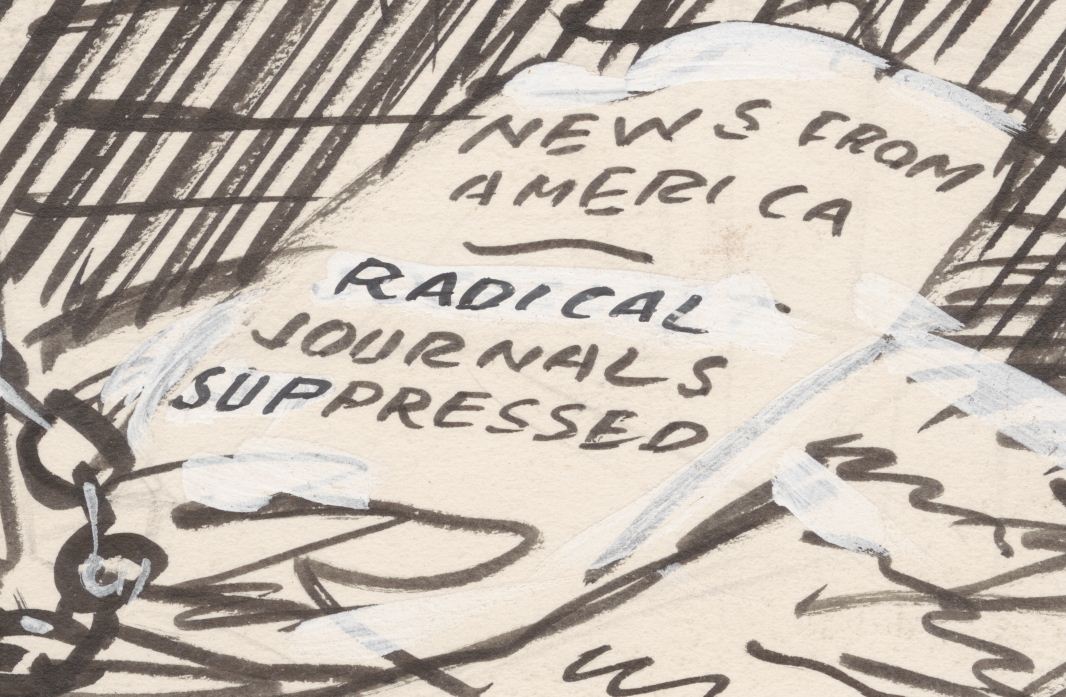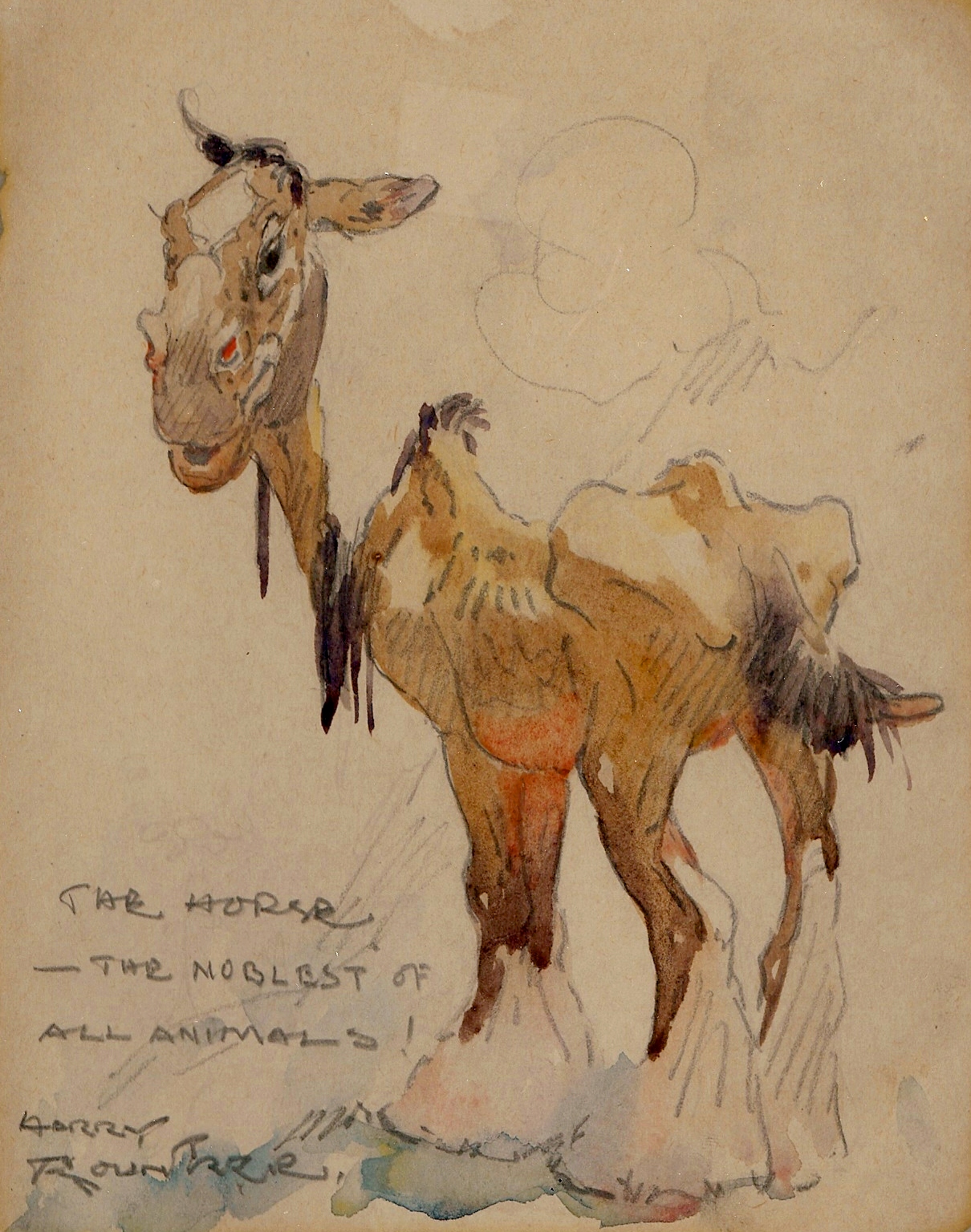We are pleased to announce our latest First Floor Gallery exhibition, “John Burroughs: In Letters & Art.” It runs through December 28, 2017.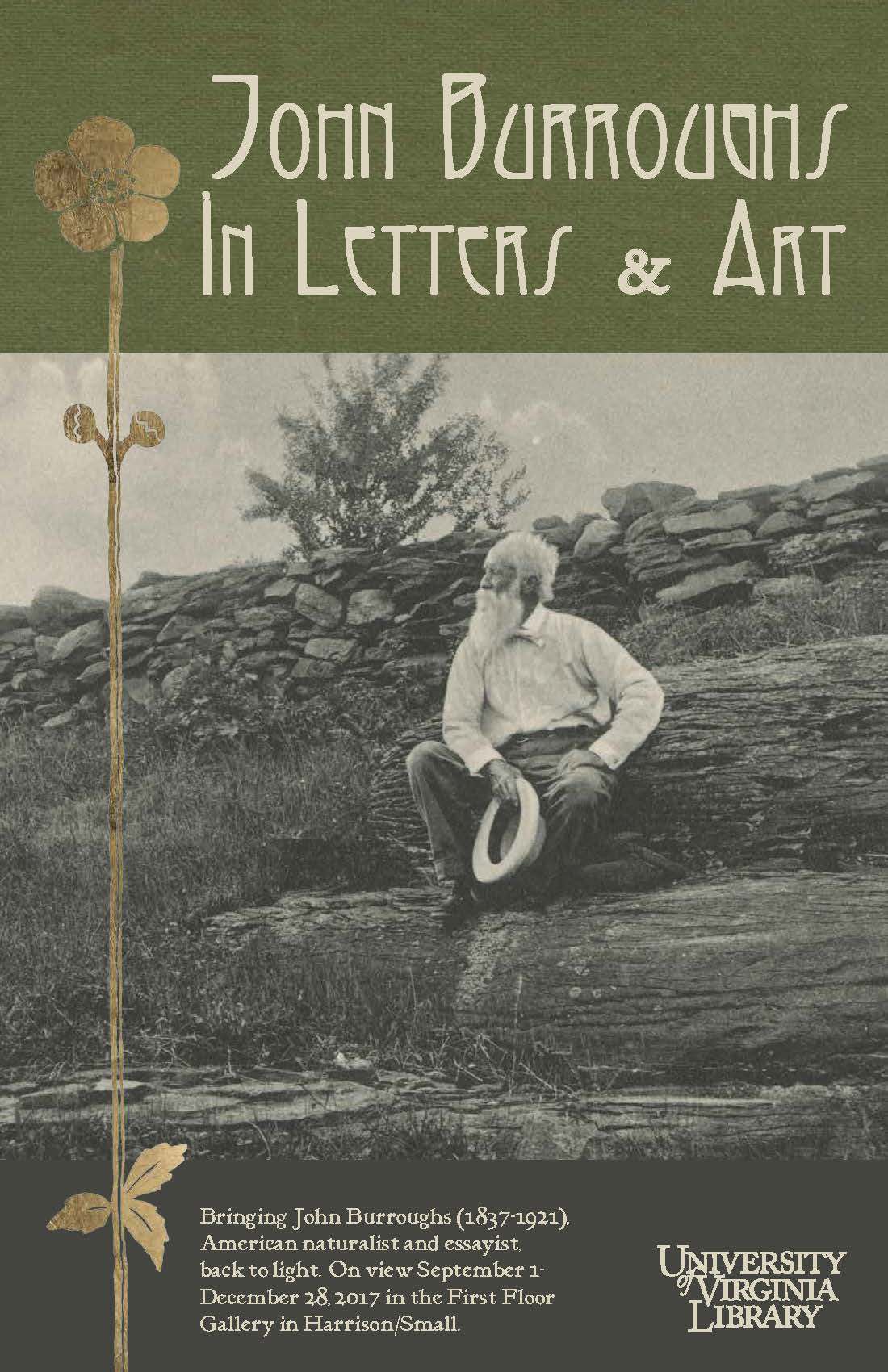
Inspired by the recent conservation treatment of a portrait of Burroughs painted by Orlando Rouland, this exhibition brings an important American naturalist back to light. The painting serves as the focal point of the exhibition, tying together writer, artist, collector, and library. The exhibition showcases books, manuscripts, and other materials from the Burroughs collection. John Burroughs’ (1837-1921) essays on nature were widely read by both scholars and the reading public during his lifetime. He counted among his friends prominent men including Walt Whitman, Theodore Roosevelt, Henry Ford, John Muir, and Thomas Edison.The Burroughs collection is part of the Clifton Waller Barrett Library of American Literature at the University of Virginia.
Here are a few tastes of the exhibition in photographs:
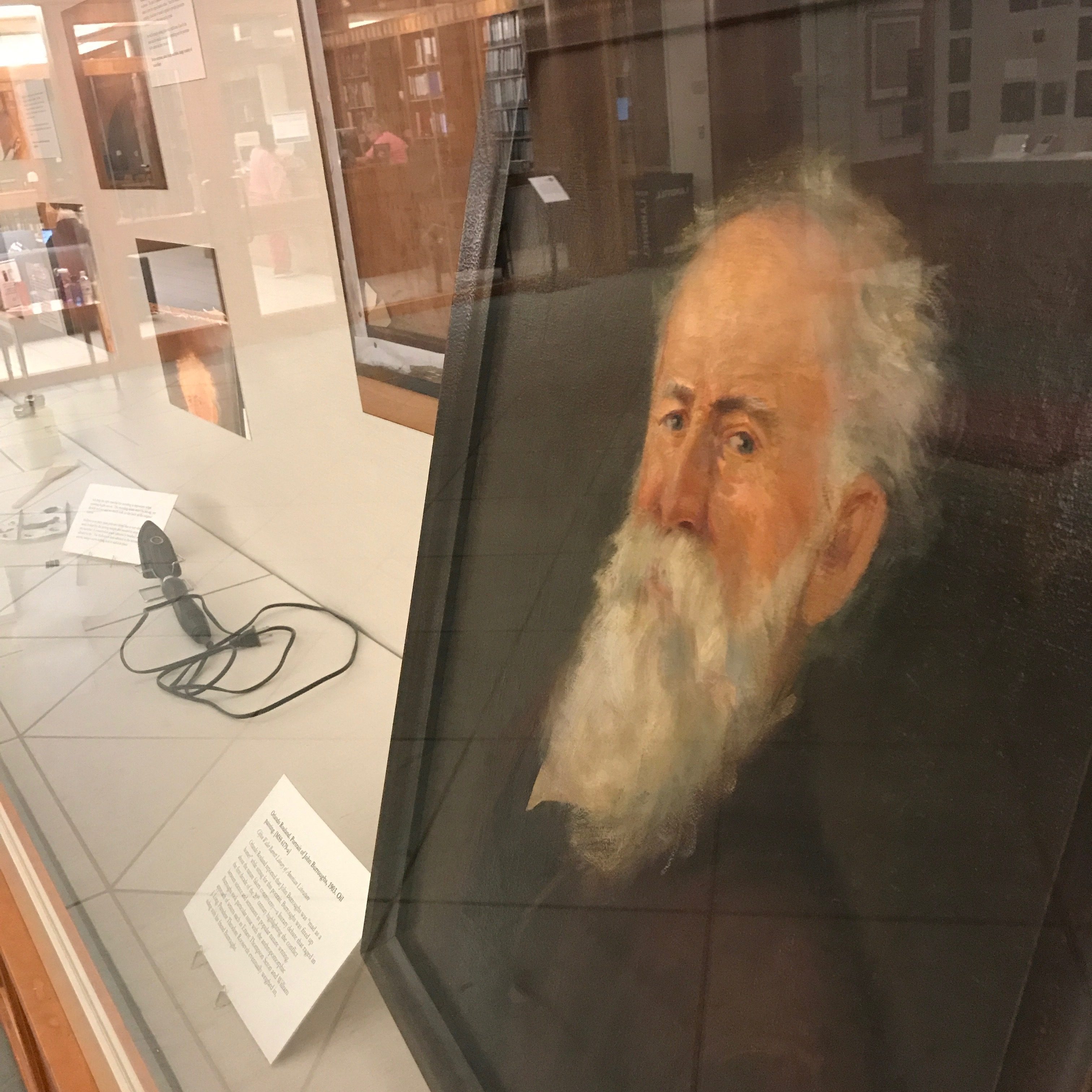
The portrait around which the exhibition was planned. Nearby are some of the tools used in its conservation treatment.
We look forward to seeing you in the gallery!



